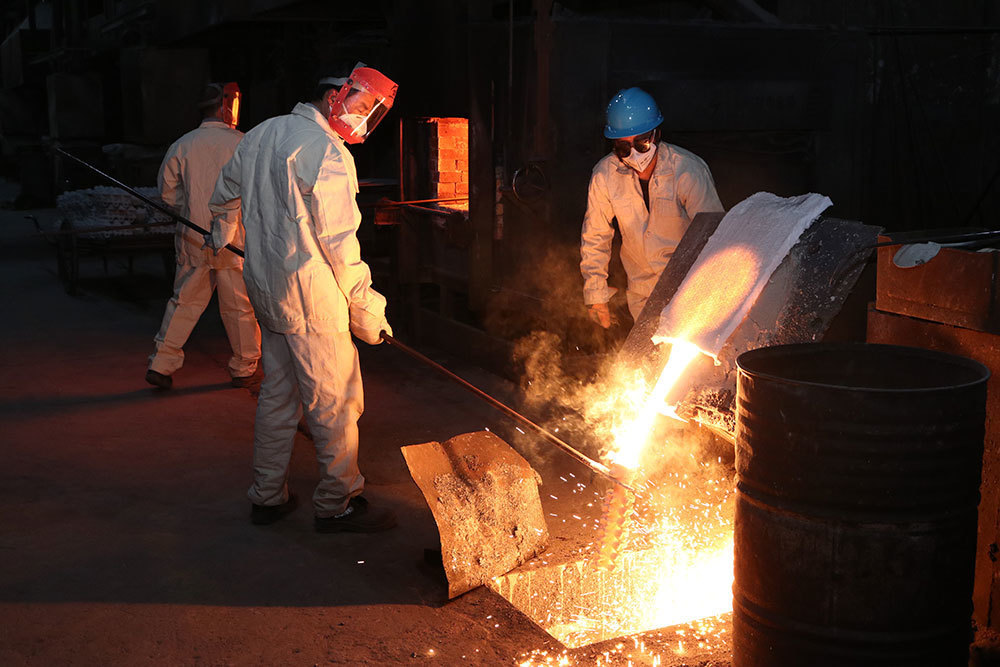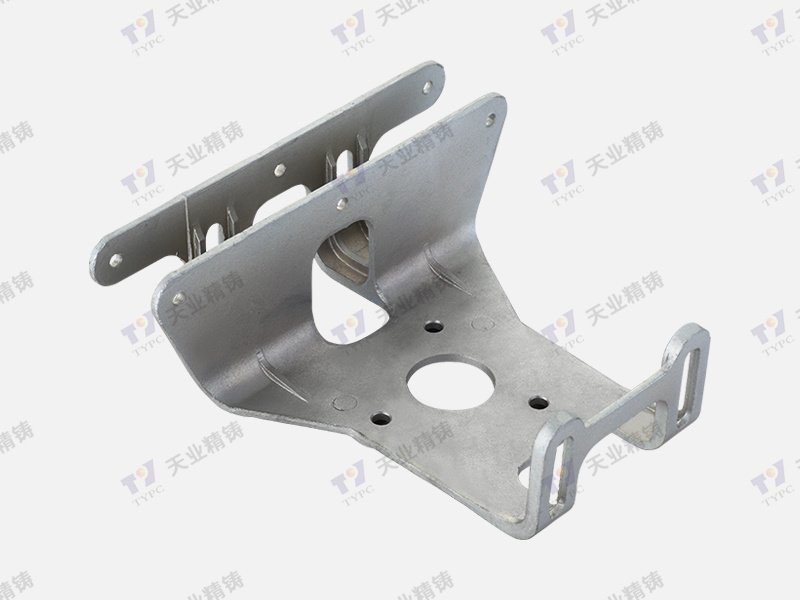2025-04-23
Pioneering Productivity: Next-Generation Power System Parts for Manufacturing Success
Pioneering Productivity: Next-Generation Power System Parts for Manufacturing Success
Table of Contents
- 1. Introduction to Next-Generation Power System Parts
- 2. Understanding Power Systems in Manufacturing
- 3. Key Components of Next-Generation Power Systems
- 3.1 Advanced Electric Motors
- 3.2 Smart Inverters
- 3.3 Energy Storage Systems
- 3.4 Sensors and Monitoring Devices
- 4. Benefits of Implementing Next-Generation Parts
- 5. Case Studies: Success Stories in Manufacturing
- 6. Future Trends in Power System Parts
- 7. Frequently Asked Questions
- 8. Conclusion
1. Introduction to Next-Generation Power System Parts
In the rapidly evolving landscape of manufacturing, **pioneering productivity** hinges upon the integration of **next-generation power system parts**. As industries strive for **greater efficiency** and **sustainability**, these advanced components play a crucial role in streamlining operations, reducing costs, and enhancing overall productivity. This article delves into various aspects of power systems, focusing on innovative parts that are defining the future of manufacturing.
2. Understanding Power Systems in Manufacturing
Power systems encompass a wide range of components that generate, transmit, and utilize electrical energy in manufacturing processes. A well-designed power system ensures that machinery operates efficiently and reliably. Understanding how these systems function is essential for manufacturers looking to improve production capabilities.
2.1 The Role of Power Systems
Power systems serve as the backbone of manufacturing operations. They provide the necessary energy to drive machinery, facilitate automation, and support various production processes. **Reliable power systems** enable manufacturers to maximize uptime and reduce operational disruptions.
2.2 Components of Power Systems
A comprehensive power system consists of several critical components, including generators, transformers, distribution panels, and power controllers. Each part contributes to the overall efficiency and effectiveness of manufacturing operations.
3. Key Components of Next-Generation Power Systems
As industries progress, the components used in power systems must also evolve. The following sections outline key components of **next-generation power systems** that are setting new standards in manufacturing.
3.1 Advanced Electric Motors
**Advanced electric motors** represent a significant leap in efficiency and performance. These motors are designed to consume less energy while delivering higher torque and speed. By incorporating **variable frequency drives (VFDs)**, manufacturers can achieve precise control over motor speed, further optimizing energy consumption.
3.2 Smart Inverters
**Smart inverters** play a crucial role in converting direct current (DC) to alternating current (AC). They optimize power flow, enhance grid stability, and facilitate the integration of renewable energy sources. With advanced features such as real-time monitoring and fault detection, smart inverters ensure the reliability of power systems.
3.3 Energy Storage Systems
The use of **energy storage systems (ESS)** is becoming increasingly prominent in manufacturing. These systems store excess energy generated during low-demand periods and release it during peak usage times. By implementing ESS, manufacturers can reduce energy costs and enhance operational flexibility.
3.4 Sensors and Monitoring Devices
Integrating **sensors and monitoring devices** into power systems allows for real-time data collection and analysis. These devices help track energy usage, identify inefficiencies, and predict maintenance needs, leading to improved efficiency and reduced downtime.
4. Benefits of Implementing Next-Generation Parts
The integration of next-generation power system parts offers numerous advantages for manufacturers. These benefits extend beyond mere operational efficiency to encompass environmental sustainability and cost reduction.
4.1 Enhanced Efficiency
Next-generation components are engineered to operate at higher efficiency levels, significantly reducing energy consumption and operational costs. This efficiency translates to a lower carbon footprint, aligning with global sustainability goals.
4.2 Increased Reliability
Modern power system parts are designed with advanced technology that enhances their reliability. This leads to fewer equipment failures and decreased maintenance costs, allowing manufacturers to maintain uninterrupted production schedules.
4.3 Improved Flexibility
With advanced components such as energy storage systems and smart inverters, manufacturers gain greater flexibility in managing energy resources. This adaptability is essential in a dynamic manufacturing environment where demand can fluctuate significantly.
4.4 Cost Savings
The implementation of next-generation power system parts ultimately leads to substantial cost savings. By reducing energy consumption and maintenance expenses, manufacturers can reinvest savings into other areas of their operations, driving further growth.
5. Case Studies: Success Stories in Manufacturing
Real-world examples illustrate the positive impact of next-generation power system parts in manufacturing.
5.1 Case Study: Automotive Industry
An automotive manufacturer implemented advanced electric motors and smart inverters in their assembly line. This transition resulted in a 30% reduction in energy consumption and a significant increase in production speed, leading to enhanced overall productivity.
5.2 Case Study: Food Processing Plant
A food processing plant adopted energy storage systems to manage energy usage more effectively. By utilizing stored energy during peak demand, the plant achieved a 25% reduction in energy costs, demonstrating the financial benefits of modern power components.
6. Future Trends in Power System Parts
As technology continues to advance, the future of power system parts will likely include several exciting trends.
6.1 Integration of Artificial Intelligence
Artificial intelligence (AI) will play a significant role in optimizing power systems. AI algorithms can analyze vast amounts of data to predict energy demands, allowing for proactive adjustments that enhance efficiency and reliability.
6.2 Increased Adoption of Renewable Energy
The shift towards sustainable manufacturing will drive the adoption of renewable energy sources. Power systems will increasingly incorporate solar and wind energy, supported by advanced energy storage solutions.
6.3 Development of Smart Grids
Smart grids will facilitate real-time monitoring and control of energy distribution. This technology will enable manufacturers to respond swiftly to changes in energy demand, ensuring optimal performance.
7. Frequently Asked Questions
7.1 What are next-generation power system parts?
Next-generation power system parts include advanced electric motors, smart inverters, energy storage systems, and sensors designed to enhance efficiency and reliability in manufacturing.
7.2 How can these parts improve manufacturing productivity?
By optimizing energy consumption, reducing downtime, and enhancing flexibility, next-generation parts significantly boost manufacturing productivity.
7.3 What are the cost benefits of implementing these technologies?
Implementing next-generation power system parts leads to reduced energy costs and maintenance expenses, ultimately resulting in substantial cost savings over time.
7.4 Are there specific industries that benefit more from these components?
While all manufacturing industries can benefit, sectors such as automotive, food processing, and electronics are particularly well-suited for the integration of next-generation power systems.
7.5 What future trends should manufacturers be aware of?
Manufacturers should keep an eye on trends like AI integration, the adoption of renewable energy, and the development of smart grids, as these will shape the future of power systems.
8. Conclusion
The landscape of manufacturing is undergoing a transformative shift, driven by the integration of next-generation power system parts. These innovative components not only enhance efficiency and reliability but also pave the way for a more sustainable future. By adopting advanced technologies such as smart inverters, energy storage systems, and advanced electric motors, manufacturers can significantly improve their operations and achieve remarkable productivity gains. As we look ahead, the ongoing evolution of power systems will undoubtedly continue to shape the manufacturing industry, fostering an environment of continuous improvement and innovation.









